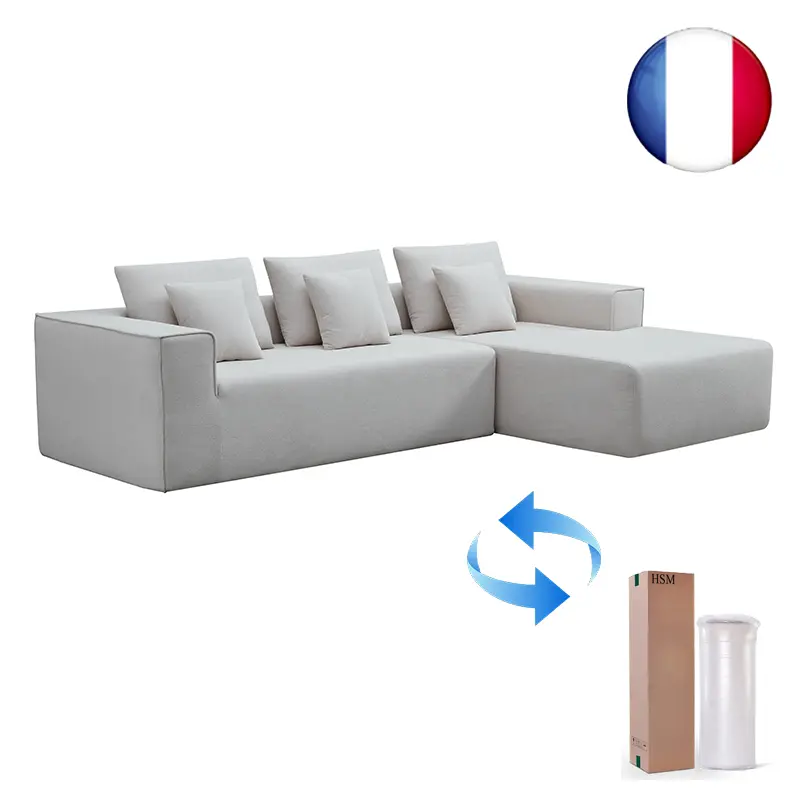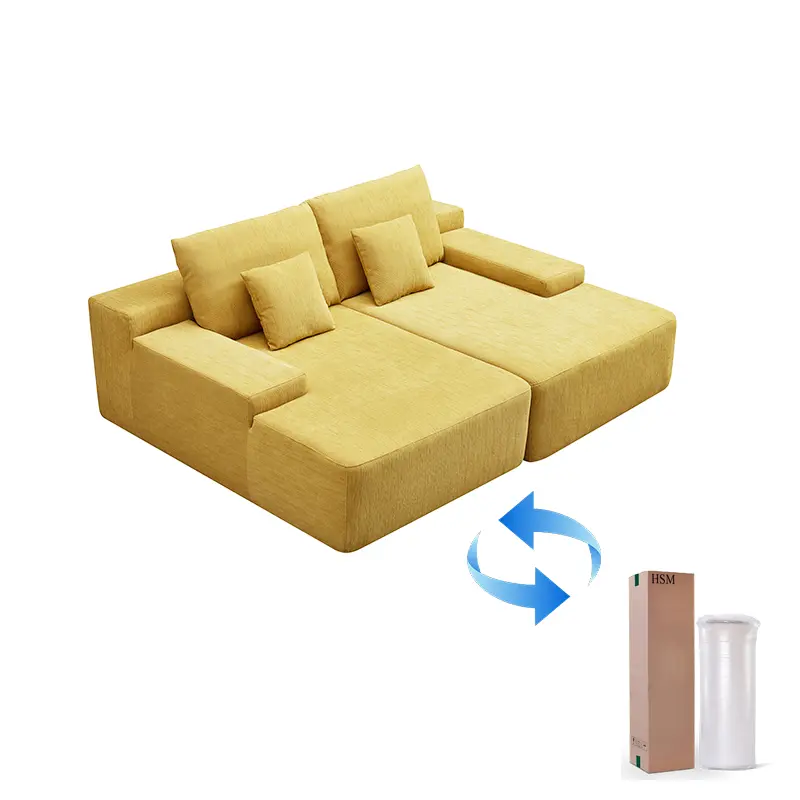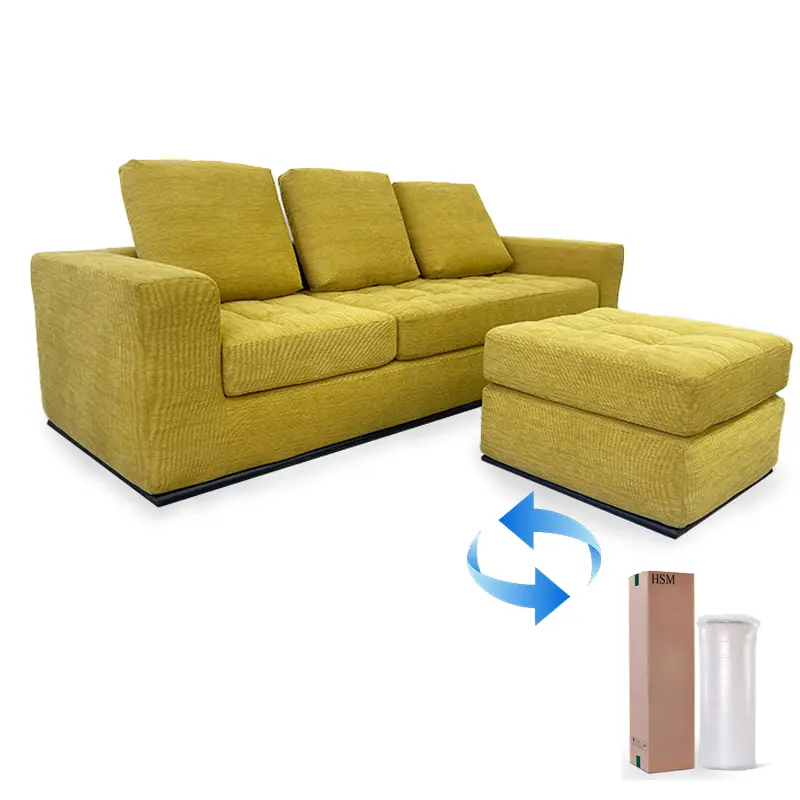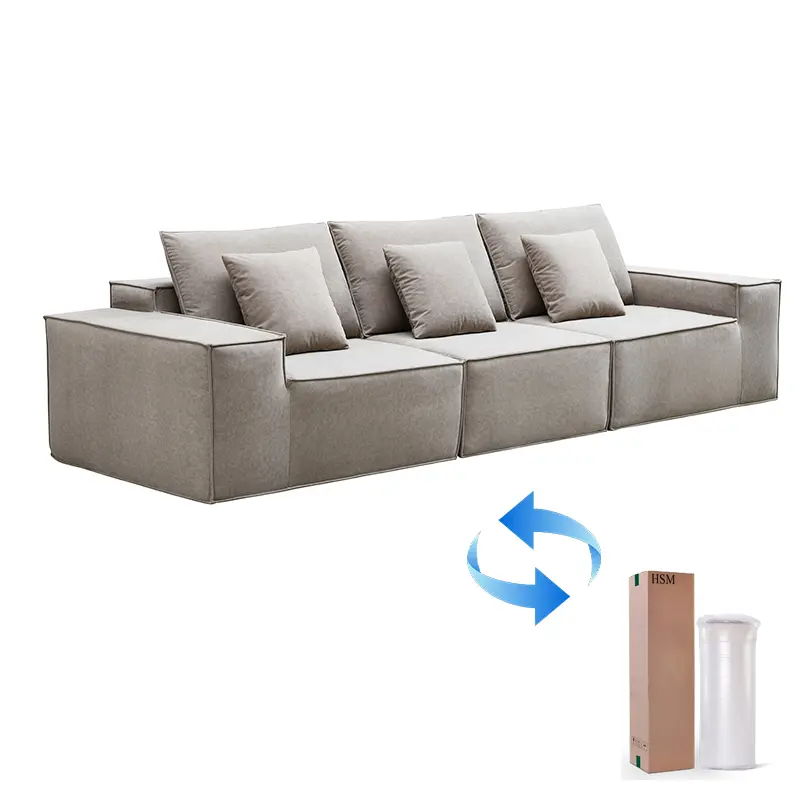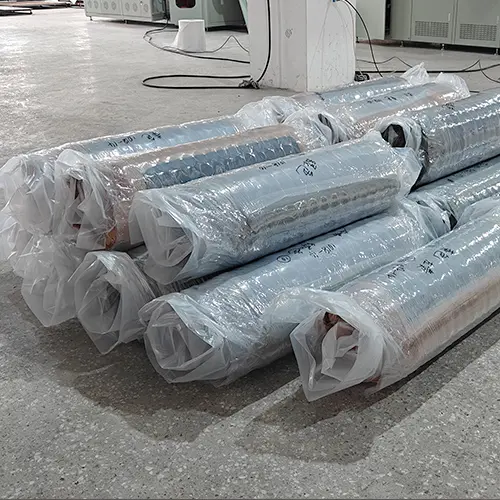What Factors to Consider When Buying a Compressed Sofa?
Finding the perfect sofa for your home can be challenging, especially when considering a compressed sofa. These space-saving and easy-to-transport options have gained popularity, but how do you choose the right one? Let's explore the key factors to consider before making a purchase.
1. What Is the Quality of the Sofa’s Materials?
A high-quality compressed Sofa Should maintain comfort and durability over time. Pay close attention to the following:
Frame Material: Solid hardwood (such as oak or beech) or metal frames ensure structural integrity and longevity. Avoid particleboard or low-quality plywood, which may warp or break over time.
Cushion Fill: Opt for high-density foam (at least 1.8 lb/ft³) or memory foam for lasting support and shape retention. Sofas with CertiPUR-US-certified foam guarantee low VOC emissions and better resilience.
Upholstery Fabric: Look for durable materials like polyester blends, microfiber, or performance fabrics that resist stains and fading. Removable and washable covers make maintenance easier.

2. Is the Size Suitable for Your Space?
Compressed sofas are ideal for small apartments, studios, and flexible spaces, but measuring correctly is essential:
- Measure your living area. Ensure the sofa fits both in its compressed state for delivery and in its expanded state when in use.
- Follow the golden ratio. A sofa should be around 0.618 times the length of your wall to maintain proportion.
- Allow for movement space. Leave at least 24 inches of walking space around the sofa to avoid a cramped feel.
Size Recommendations Based on Room Size
| Room Size | Recommended Sofa Length | Compressed Thickness |
|---|---|---|
| < 60㎡ (small) | 1.5 – 1.8 meters (loveseat) | ≤ 15 inches |
| 60 – 90㎡ (medium) | 1.8 – 2.4 meters (three-seater) | ≤ 18 inches |
| > 90㎡ (large) | 2.4 meters+ (sectional/modular) | ≤ 22 inches |
3. Does It Offer Multi-Functionality?
Compressed sofas are not just about saving space—they can also provide added functionality. Consider options with:
- Built-in storage compartments for blankets, books, or seasonal decor.
- Convertible designsthat turn Into A Bed for guests.
- Modular components allowing you to rearrange or expand seating as needed.

4. What Is the Budget and Maintenance Cost?
A compressed sofa is an investment, so understanding pricing and long-term care is crucial:
- Budget-friendly options (starting at $200–$400) are ideal for occasional use but may lack durability.
- Mid-range ($400–$700) sofas balance quality and affordability, offering better materials and features.
- Premium ($700+) models provide top-tier comfort, customization, and enhanced durability.
Maintenance Tips
- Opt for removable, washable covers to reduce professional cleaning costs.
- Water-resistant or stain-resistant coatings extend fabric life and simplify upkeep.
- Rotate cushions and vacuum regularly to prevent uneven wear.
5. Is It Environmentally Friendly?
If sustainability is important to you, look for:
- CertiPUR-US or GREENGUARD certification to ensure low chemical emissions.
- Recyclable or eco-friendly materials, such as bamboo-based fabrics or FSC-certified wood.
- Brands with ethical production practices, reducing waste and carbon footprints.
Final Thoughts: Is a Compressed Sofa Right for You?
If you need a space-saving, stylish, and versatile seating solution, a compressed sofa is a great choice. However, prioritizing quality materials, proper sizing, and long-term durability will ensure you get the best value for your investment.
By considering these factors, you can confidently choose a compressed sofa that fits your home, lifestyle, and budget. Happy sofa shopping!







